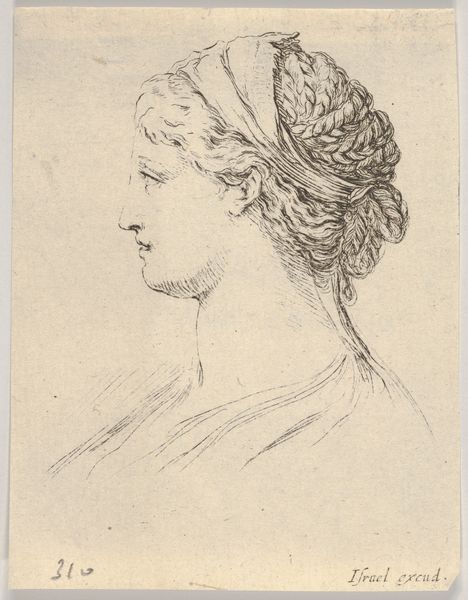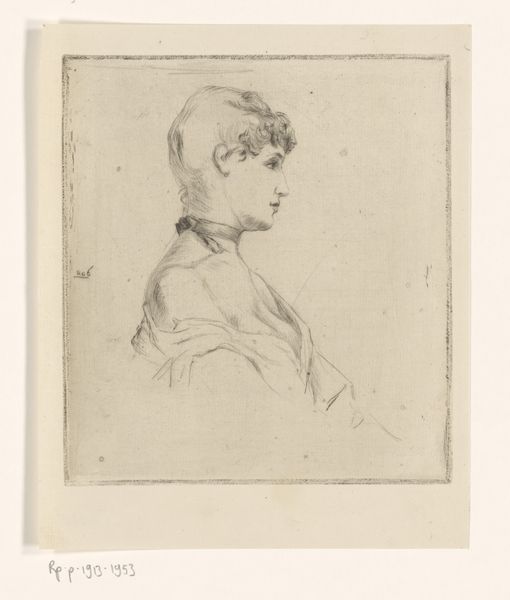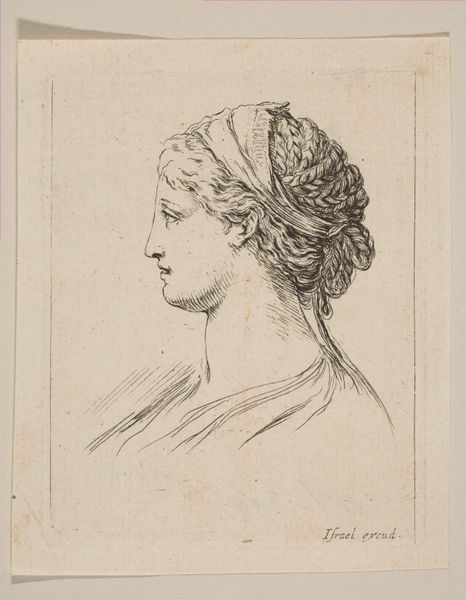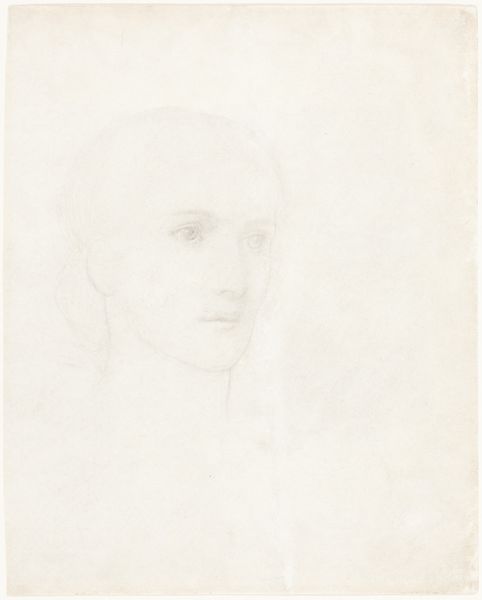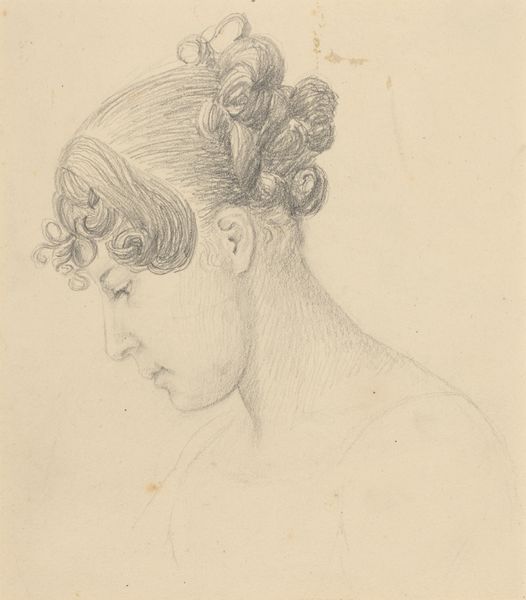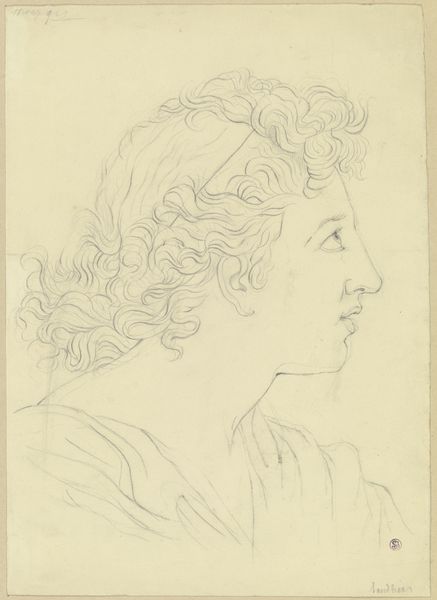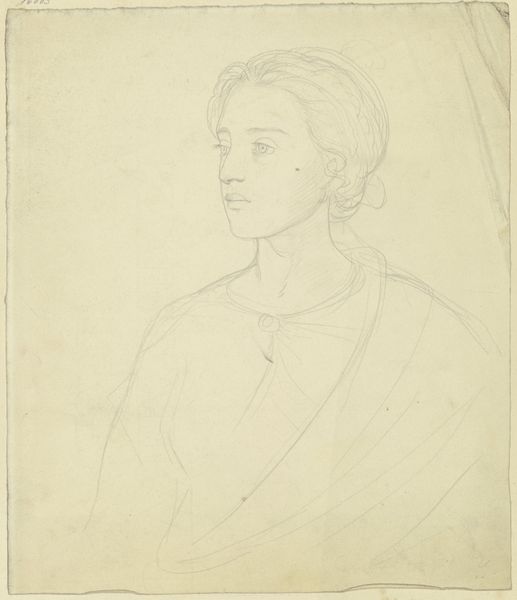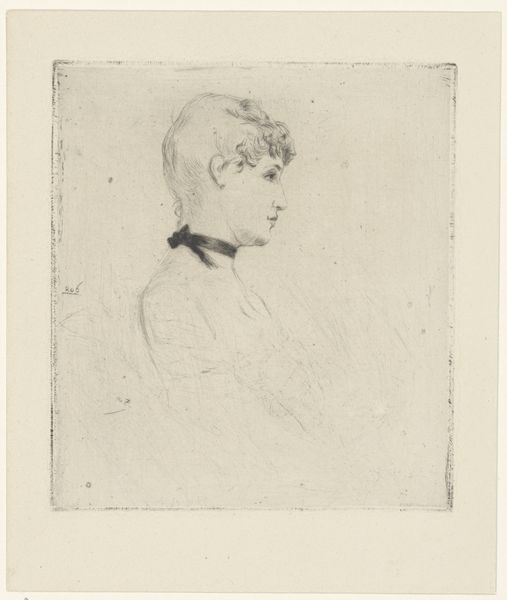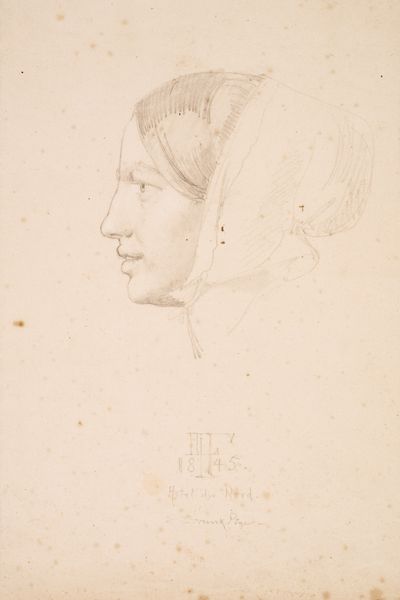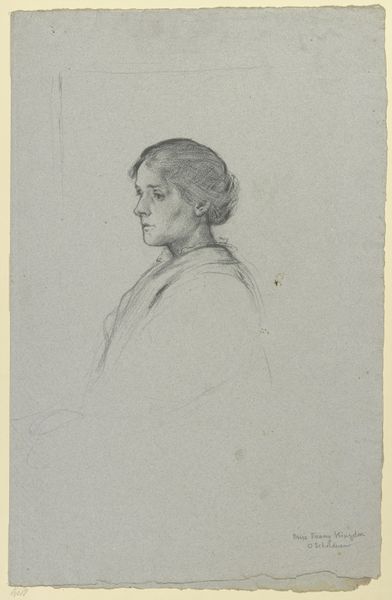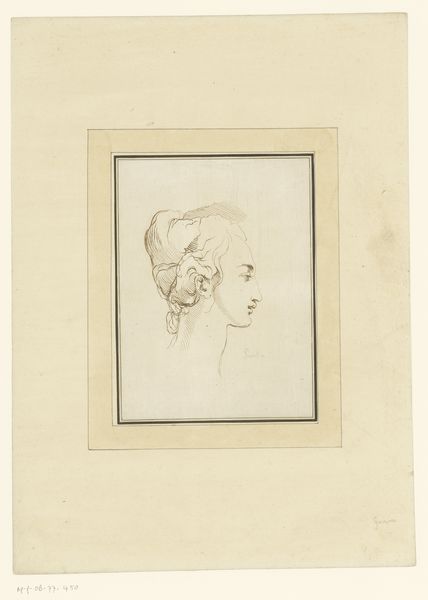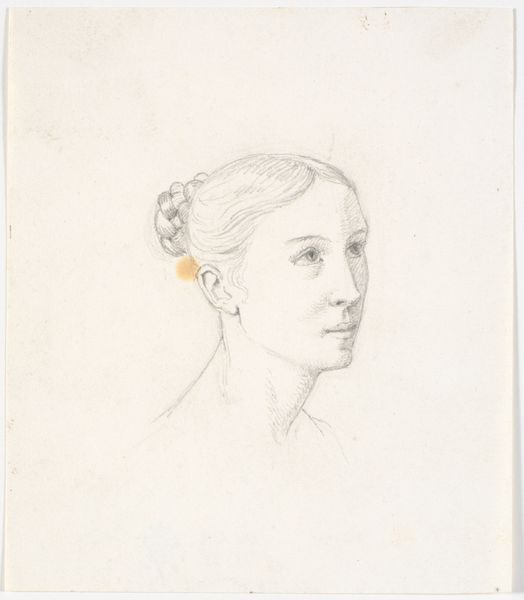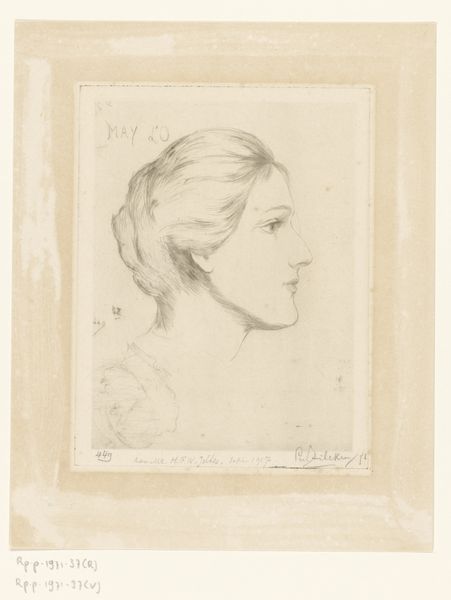
drawing, print, paper, pencil
#
drawing
# print
#
pencil sketch
#
classical-realism
#
paper
#
pencil
Dimensions: 273 × 196 mm.
Copyright: Public Domain
Curator: Before us we have a pencil drawing entitled "Bust of Faustina" by John Downman, currently held at The Art Institute of Chicago. It's a strikingly simple portrait, rendered with delicate lines on paper. What are your initial impressions? Editor: Immediately, I’m struck by the cool austerity of this woman. The minimal rendering emphasizes her regal bearing and the rather severe coiffure typical for depictions of empresses. I find myself pondering what qualities defined "Faustina" that the artist chose to immortalize? Curator: That's a fascinating entry point. We have to consider what ‘Faustina’ this actually represents, since there were at least two prominent women in Roman history named Faustina, both empresses. There's Faustina the Elder, wife of Antoninus Pius, and her daughter, Faustina the Younger, who married Marcus Aurelius. Each woman carries a weight of political influence and historical baggage that this image seems to simplify, or perhaps, idealize. It taps into a specific kind of classical revival happening when Downman was working. Editor: Yes, it feels stripped of individual personality, molded into a prototype. I wonder, too, about the associations tied to the specific hairstyle: those careful, looped waves so close to the head project notions of both control and deliberate artistry. It speaks to imperial power manifested in even the smallest details. I suspect its symbolic meaning goes beyond pure fashion. Curator: That's perceptive. And remember Downman was part of a vibrant artistic and social scene in Britain, keenly aware of antiquarian interests and the ongoing fascination with all things Roman. His drawings were made for a specific market, eager for accessible, domestic-sized versions of classical grandeur. So, while you sense this impersonal touch, this perhaps helped give the image authority. The cultural understanding would've completed it for contemporary viewers. Editor: So the very restraint in style acts almost as a cipher. By minimizing the personal and emphasizing the conventional symbolic markers – the hair, the implied imperial vestments – Downman makes this a portable, readily consumable symbol of Roman power? Curator: Precisely. It became a way to own a piece of a grand narrative, filtered through 18th-century aesthetics and social codes. And notice also the almost studied sketchiness - the drawing style actually invites an audience into its making, thus reinforcing notions about access, learning and the display of taste that informed collections during that era. Editor: It's less about an individual and more about invoking a broader imperial idea – almost like an ancient brand! I suppose that's the allure of symbols; the ability to transport us to something bigger than ourselves. Curator: I agree entirely. It allows us to understand how a single image can contain so much information about shifting aesthetics, cultural obsessions, and the enduring power of classical imagery.
Comments
No comments
Be the first to comment and join the conversation on the ultimate creative platform.
